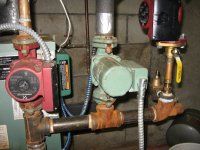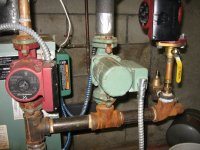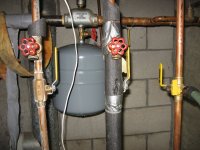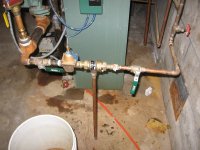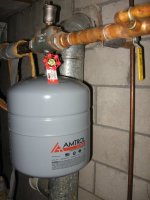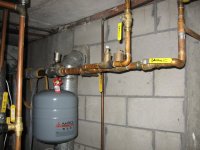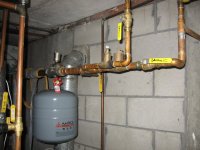mathfogie
New Member
I have what I think is a fairly typical forced hot water heating system. There is a pump on each of the three zone return pipes, before they merge and return the water to be reheated. The refill water goes through a nobackflow valve and into the merged return pipe. The expansion tank and air vent are mounted to an air purger about 6 or 8 pipe feet from where the pipe leaves the boiler. I noticed a large wet spot near the boiler. Looking closer I saw water dripping from the expansion tank. Then I saw the insulation around the hot pipe was wet and finally I saw the air vent was wet and scaly and the top of the tank was rusty. I probably never looked at the tank since moving in, in 1978, but I think the wet spot was no more than 4 or 5 weeks old. I turned off the automatic refill line and drained the system using the three ports on the return lines. It was a pain to remove the air vent and expansion tank because of rust, but time and light oil helped. I replaced the expansion tank and air vent . The real trouble came when I tried to refill the system. I ran a hose from one of the drain ports to a floor drain, opened the valve to that hose and opened the valve on the automatic refill line. Nothing came out of the hose. Same result on all three zones. Same result with thermostats off or on and calling for heat. No lack of pressure at any sink in the house. This smells like I'm doing something really dumb ( not doing something really obvious). I'll gladly admit it it if I knew what it was. Thanks for any suggestions.

